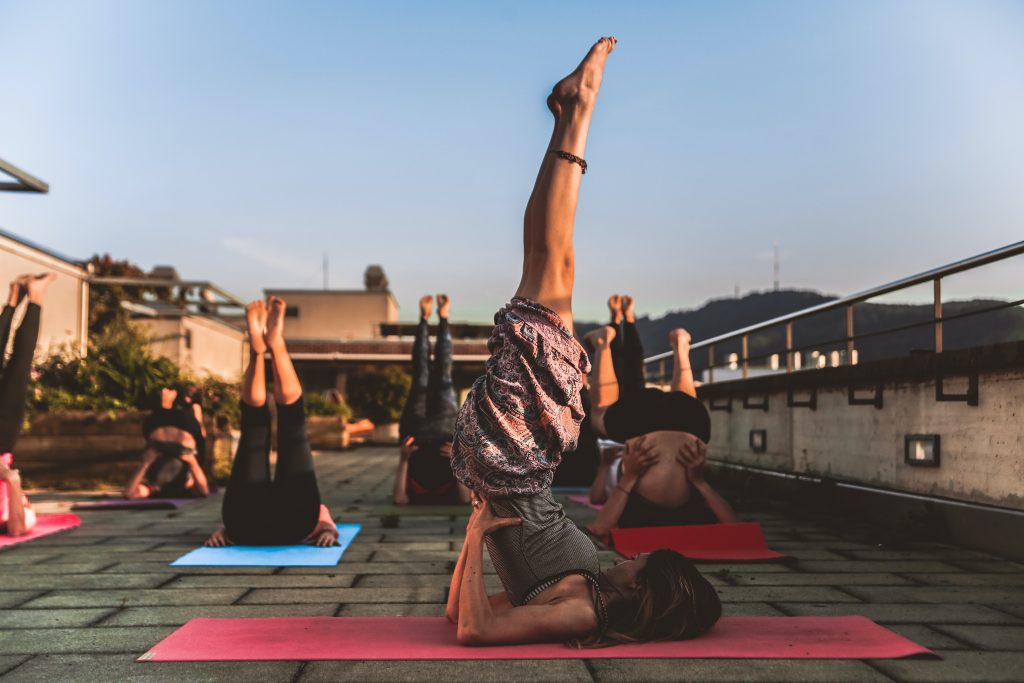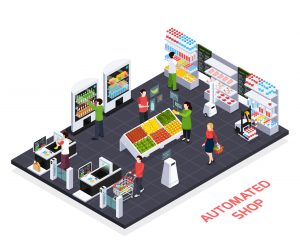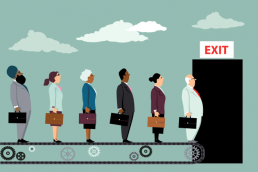2022
Fighting the Great Resignation: What Companies are Doing Today to Retain Talent
The Great Resignation. Honestly, this sounds like a pretty scary proposition for employers and business owners. Although no one can deny the effect the pandemic has had on current work practices, this newfound importance placed on work-life balance isn’t going anywhere. Rather than being the scary proposition it could be, many companies are combating this talent exodus by finding ways to bring new value not just to the work of their employees, but to their lives as well.
Flexibility
 Anthony Klotz, the Texas A&M management professor who coined the term “the Great Resignation,” recently spoke with CNBC and shared that “the pandemic brought the future of work into the present of work…we are not going back to the work of 2019.” Business owners who simply think they are going to be able to bring their employees back to the way things were are going to get left behind. According to a recent LinkedIn poll, 63% of respondents claimed work-life balance is their top priority when finding a new job, and the Workhome Project found that people value flexibility as much as they do a 10% raise.
Anthony Klotz, the Texas A&M management professor who coined the term “the Great Resignation,” recently spoke with CNBC and shared that “the pandemic brought the future of work into the present of work…we are not going back to the work of 2019.” Business owners who simply think they are going to be able to bring their employees back to the way things were are going to get left behind. According to a recent LinkedIn poll, 63% of respondents claimed work-life balance is their top priority when finding a new job, and the Workhome Project found that people value flexibility as much as they do a 10% raise.
It should come as no surprise then that companies are shifting to hybrid and remote models that provide more benefits than the old in-office adage of “we’re a family here.” The talent pool drastically increases when shifting to a pure remote model, adding opportunities not just for employees who may have been landlocked from their dream jobs, but for employers as well to create a more diverse and skilled employee pool. And flexibility doesn’t just mean where you work, but how and when. Accessibility has become a focus in interviews and workplace structure, and when applied appropriately, results in a workforce who is living to work, not the other way around.
Culture
We are not suggesting the office is going away forever, in fact quite the opposite. The office now needs to serve a different purpose in the life of your employee. In speaking with Marc Spector, FAIA and Principal/Owner of Spectorgroup, a recent Bizydev client, he said “companies need to create a cultural, hospitality-driven experience in the workplace that is more compelling than that of the home office. Cultural capital is the new office currency” and this trend is here for the long-haul.
 In terms of office layout, companies are experimenting with more open concepts, from activity-based workspaces, to coworking spaces, and hotdesks (where no one in the office, even the C-suite has their own personal desk), all with the goal of creating more options for workers regarding getting their work done. Even more extreme, some companies, especially in the tech sector on the east coast, are experiencing what can only be referred to as the “San Francisco-ization” of the office. Offering amenities such as free meals, lounge spaces, recreational activities, and beer taps, the companies that are approaching this new trend from the perspective of getting employees to “want” to, rather than “need” to, be in the office are the ones that are going to win this battle.
In terms of office layout, companies are experimenting with more open concepts, from activity-based workspaces, to coworking spaces, and hotdesks (where no one in the office, even the C-suite has their own personal desk), all with the goal of creating more options for workers regarding getting their work done. Even more extreme, some companies, especially in the tech sector on the east coast, are experiencing what can only be referred to as the “San Francisco-ization” of the office. Offering amenities such as free meals, lounge spaces, recreational activities, and beer taps, the companies that are approaching this new trend from the perspective of getting employees to “want” to, rather than “need” to, be in the office are the ones that are going to win this battle.
Employee Wellness
The pandemic has been mentally taxing on most, and with this came a shift in focus in the way people are thinking about their wellness. Mental Health became a much bigger focus during the pandemic, and employers who are providing support in these areas now have a big leg up on the competition. In Mercer’s 2021 Health on Demand report, 42% of employees with access to mental health benefits reported that they’re more likely to stay at their current organization than if they didn’t have those resources. They also found that 44% of those without access to mental health benefits did not feel supported by their employers.
the pandemic, and employers who are providing support in these areas now have a big leg up on the competition. In Mercer’s 2021 Health on Demand report, 42% of employees with access to mental health benefits reported that they’re more likely to stay at their current organization than if they didn’t have those resources. They also found that 44% of those without access to mental health benefits did not feel supported by their employers.
Now there are many ways employees can further their efforts in these areas. New health and wellness initiatives are being brought to companies every day. From company-wide fitness platforms, to providing mental health days, to the aforementioned workplace flexibility, and to wellness retreats, these are just some ways employers are trying to create a healthier experience for their workers. It is more than just adding perks to the workplace however, it is the true intent by company leaders and their commitment to a healthier life for their employees that will truly make a difference.
What Now?
It is definitely an uncertain time for business owners. With the job pool ever expanding thanks to remote work, a change in mentality when it comes to what actually matters in the workplace, and a workforce that has demonstrated they are willing to move on if their needs are not met, this is a time for leaders who can empathize to take advantage of this opportunity to create the most well-rounded workplace.
Tech Trends: What's in Store for 2022
From an innovation standpoint, the past couple of years were full of dramatic and transformational change and we do not expect 2022 to be any different. We’re particularly excited about the changes happening in PropTech, Health and Wellness, and Retail, as we have been busy engaging new clients in all of these verticals.
PropTech

In PropTech, we expect to see continued emphasis placed on the use of technologies that help customers and businesses visualize and experience their spaces in the digital world (e.g., AR/VR, visualization, advanced 3D rendering). During 2021, we saw the rise of virtual Real Estate as the wider world was introduced to metaverse platforms like Decentraland and The Sandbox, and our opinion is that this was just the start. We believe that advances in AI will allow this evolution to proliferate even faster as development engines and deep-learning algorithms are able to take user-specified metrics and requirements and automatically generate robust designs and finished building environments.
Take our current client Qbiq as an example. The Company utilizes proprietary AI and advanced rendering techniques to design finished office floor plans in minutes, uniquely tailored to a customer’s specific needs. With private investments in PropTech up 28% YoY, this sector is going to continue to explode and Bizydev’s expertise in real estate positions us perfectly to take advantage.
Health & Wellness

On the Health and Wellness front, we know that remaining healthy will remain a top priority for people in 2022 as we cautiously emerge from the COVID19 pandemic. While we could focus on a variety of trends here, we are most excited about the opportunities in the realm of connectedness, on both an interpersonal and technological basis, particularly as we see more and more people transition to remote-work-friendly lifestyles. Ecosystems that enable and support distributed communities by allowing users to stay connected around the globe, interact with specialists and professionals, compete with their friends to achieve goals, and the like, will ultimately lead to better outcomes across an array of disciplines (e.g., fitness, mental health, weight management).
Supporting this will be the continued proliferation of smart, connected devices that enhance the health and wellness experience in the home and provide users useful and impactful data. Whether it be connected fitness (iFIT), smart sleep systems (Eight Sleep), or fitness trackers (Whoop, Oura), we are now able to gain real-time insights concerning all aspects of our daily well-being and performance. It won’t be far off until we see the interconnectedness taken to the next level whereby these devices are all able to communicate and exchange data with one another, effectively comprising a single, holistic platform empowering individuals to live healthy and productive lives with minimal effort.
Retail

For Retail, we anticipate that the convergence between brick-and-mortar and digital channels will accelerate as the broader use of in-store automation and contextual analytics at the edge bring us closer to a unified, and highly-personalized, omnichannel shopping experience. Throughout 2021 and already into 2022, we have seen big-box retailers like Walmart, BestBuy, and Walgreens launch internal retail media networks to capitalize on the burgeoning “store as a medium” opportunity–think targeted ads on digital signage as you pass by or individualized promotions pushed to your phone while shopping all driven by customer datasets comprised of comprehensive in-store and online data–which has been enabled by these new technologies.
Another embodiment of this trend can be seen in the work being done by our client Brik+Clik, who is shaping the future of retail by bringing the convenience of online while allowing consumers to touch, feel, taste and try-on their favorite brands in a real-world environment. The benefit to the shopper is clear, but Brik+Clik is also changing the game for D2C online brands who now have a capital-light, data-driven, white-glove alternative to establishing their own physical retail presence. Instead of Location, Location, Location, for physical retailers, it’s becoming Data, Data, Data.

